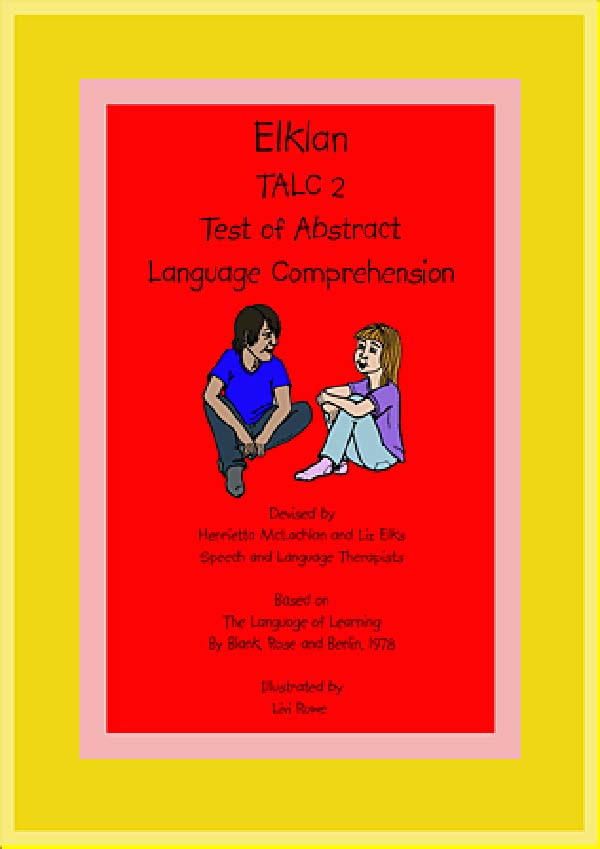Test of Abstract Language Comprehension (TALC) 2
5 out of 5 based on 1 review
£50.00 plus postage
This beautifully illustrated resource is designed to help speech and language therapists, education staff and the wider workforce to assess and develop the verbal reasoning skills of pupils aged 11 and over.
The TALC 2 is based on the Language of Learning Model proposed by Blank, Rose and Berlin (1978). The Language of Learning Model is popular in Australia where it is referred to as 'Blanks' or 'The Blank Language Scheme.' This scheme is well received by teachers and teaching assistants working with children at Key Stages 2 & 3 as it helps them to differentiate class based activities for all children but especially those having difficulty understanding language and talking. The assessment will enable children to be appropriately assessed and supported at the right level for them. Anyone familiar with the principles of assessing children can use TALC 2.
More information about 'Blank' is written in the resource and in all Elklan Language Builders books apart from 'Communication Support for Children with Severe and Complex Needs.
TALC 2 can be used to:
- Assess the level of abstract language a young person can understand.
- Set individual, specific, measurable, achievable, realistic and timely (SMART) targets.
- Increase the awareness of the types of questions and directions the pupil might be expected to understand.
- Indicate how the language used to interact with the young person can be modified to ensure that the pupil understands the linguistic demands.
- Encourage the development of the young person's abstract reasoning skills within his level of ability.
- Develop the young person's confidence because the demands will be realistic.
- Measure change.
There are three parts to the TALC 2 assessment:
- Part I involves a picture assessment. The topics for the six pictures have been carefully chosen to reflect the experiences of a wide and diverse population. A picture is shown or four pictures are given to put in the correct order. The assessor asks the questions listed on the score sheet and notes can be made about the responses. There are 60 questions.
- Part II of the TALC gives a list of the types of questions which can be adapted to suit all situations so that assessment can take place during natural communicative interactions. A simple record sheet is provided.
- Part III of the TALC provides examples of how to modify questions asked whilst teaching different curriculum subjects. Examples are given for English Literature, Maths, Science, Technology, Geography and History.
All the score forms can be photocopied for multiple use.
Order securely online today
We
accept Mastercard and Visa, or payment on foot of invoice for organisations
Delivery and returns info
Reviews
Nafisa Shehu, Highly Specialist Speech & Language
23rd February 2018
Try The Test of Abstract Language Comprehension (TALC) 2. It would give an indication of the level of understanding of the students and it also has some differentiation suggestions for each core subject in the appendix. The results can be quite easily used for functional targets.
